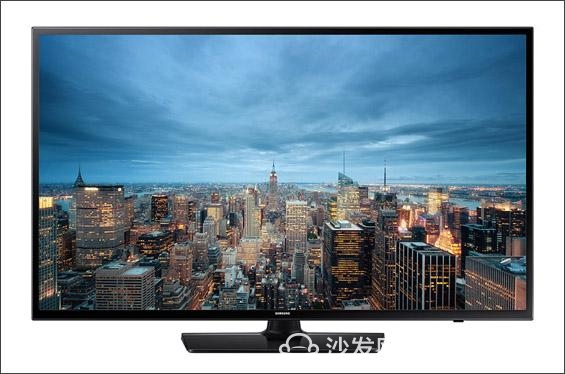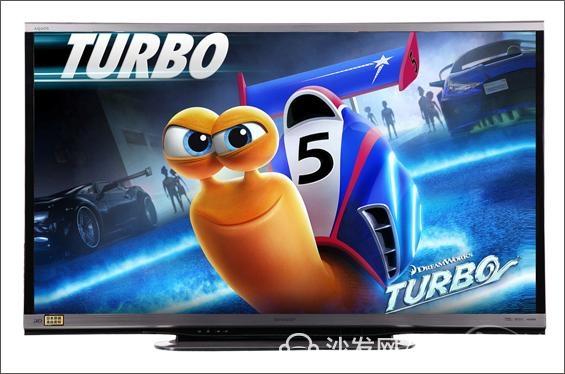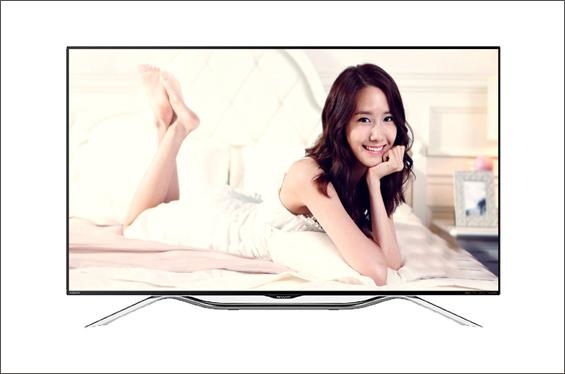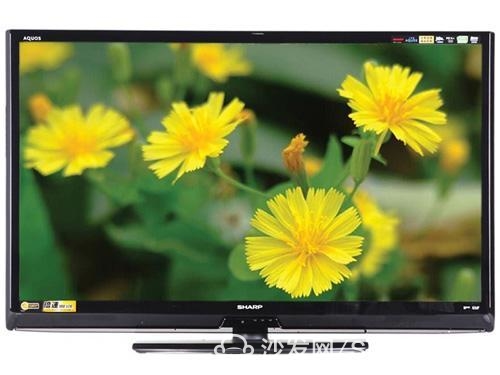Many consumers went to the electronics store to see how much plasma TV, LCD TV is how much money, but it is not clear which plasma TV and LCD TV which is better, the difference between the two. Next Xiaobian will elaborate on you from several aspects.

The full name of plasma TV is Plasma Display Panel. Chinese is called plasma TV. It is a device that injects mixed gas between two ultra-thin glass plates, and applies a voltage and uses phosphors for luminescence imaging. Compared with CRT tube display, it has the characteristics of high resolution, large screen, ultra-thin, rich colors and vivid colors. Compared with LCD, it has features such as high brightness, high contrast, large viewing angle, bright colors, and rich interfaces.
The plasma display technology can be divided into two major categories of direct-current type PDPs in which electrodes directly contact with gas and alternating-current type PDPs in which dielectric layers are covered on electrodes according to its operating mode. There are mainly three types of color PDPs researched and developed: single-substrate type (also called surface discharge type) AC PDPs, dual type (also called opposite-discharge type) AC PDPs, and pulsed-storage DC PDPs.

LCD TVs can compete with plasma TVs with only 42-inch LCD TVs. Taking the 45-inch LCD TV launched by Sharp as an example in 2006, the market price is nearly 70,000 yuan, while the price of plasma TVs with the same display area has dropped to less than 20,000 yuan. It will take a short period of time for LCD TV prices to fall within the same price band of plasma TVs of the same specifications. The reason for this is mainly due to the lower yield rate in the manufacturing process of the large-screen liquid crystal display panel, resulting in the inability to reduce the cost. The technology of large-screen liquid crystal display panels is still relatively closed, and there is still no competition for mass production in the world, and there are also great differences in quality.
According to a survey conducted by the authoritative German magazine Macwelt, although the LCD screen is much less radiant than the normal display screen, it is more likely to make our eyes become tired and may even cause headaches due to its high brightness. symptom. The researchers pointed out that when the brightness of the display reaches 100cd per square meter (ie, the luminous intensity unit "candela"), it will have an impact on the eyes. However, the luminous intensity of the liquid crystal displays they tested exceeded 300 cd per square meter, and some even reached 400 cd-500 cd.
Dr. Wei Haien, a German computer expert who conducted the survey, said that not only LCD computers but also LCD TVs have this problem. In order to increase the clarity of these LCD TVs, in addition to relying on the light pipe behind the screen to increase the brightness, the use of special "polish technology" makes the surface of the display look like a piece of glass, which is very texture. Improves the color contrast and saturation of the screen. However, it also reflects light like glass. Especially when the light shines on the screen, it will increase the light reflection. Consumers using such displays are susceptible to being "stabbed" by light and have symptoms of tired eyes that slowly cause vision loss and headache health problems.

The advantages and disadvantages of plasma and LCD TVs
Advantages: (plasma TV)
Good color reproduction, natural color display; 2. Dark field dynamic range, rich image sense; 3, image tailing time is small, dynamic clarity is high; 4. Large viewing angle, good brightness uniformity; 5, easy to implement Big screen.
Disadvantages: 1, the screen size is small, there is no small size model; 2, large size, weight, higher power consumption; 3, due to high temperature discharge, prone to burn screen phenomenon; 4, the screen brightness is low, particles The sense is more obvious; 5, the heat is greater, the noise is more obvious.
Advantages: (LCD TV)
Size and model are complete, covering the size; 2, small size, relatively thin, low power consumption; 3, the image does not have inter-line and large area flicker; 4, high brightness, display image translucent, bright; 5, is not easy to cause afterimages and Burning phenomenon.
Disadvantages: 1, viewing the image of a smaller viewing angle; 2, moving images are likely to produce tail; 3, LED high-energy blue light brightness is too high, damage to vision, easy to produce light leakage, full-screen brightness uniformity is poor; 4, dark field dynamic range is small , poor contrast; 5, poor color reproduction, color coverage is small

Plasma TV knowledge
Plasma display panel (hereinafter abbreviated as PDP) is a new-generation display device adopting plasma screen technology developed rapidly in recent years. It originated in the United States in the early 1960s. The basic principle of PDP technology is different from other display systems. It uses matrix mode to display images. Its screen is composed of countless pixels (dots). Some of its front and back special glasses contain some In an inert gas, a voltage is injected into each pixel through the address electrode of the back glass substrate layer and the transparent address electrode of the front glass substrate layer, and a pixel of the injected voltage will emit ultraviolet light (Ultra Violet), causing each pixel to be The red, green, and blue primary phosphors react accordingly to produce visible light of various colors.
Since its introduction in the 60s, the PDP has made remarkable progress. Since the injected voltage is divided into AC AC and DC DC, PDP is also divided into AC PDP and DC PDP. Currently, AC PDP (AC-PDP) technology has matured and commercialized; and DC PDP (DC-PDP) technology is also developing. Compared with the AC-PDP, the DC-PDP is more complex than the AC-PDP because of the screen structure, the cost is slightly higher than the former, and it is slightly inferior to the AC-PDP in luminance, life efficiency, and the like, so the use range is not as wide as the former.
The current global production of PDP manufacturers are Japan's Fujitsu, NEC, Panasonic, Sony, Toshiba, Mitsubishi, Sharp, Philips of the Netherlands, the United States Photonic, Plasma and France's Thomson and other companies, domestic production (assembly) manufacturers Changhong, SVA , TCL, Haier and so on. The reason why it pays attention to the public in a few short years is because it has the following advantages:
Ultra-thin and light
Since the advent of television, CRT tube technology has always been the mainstream of display technology. Although the brightness, contrast and resolution of CRT tubes have improved for several decades, their thick and bulky characteristics have not changed. The bigger the screen, the more The more serious. A 38-inch CRT TV is about 800mm thick and weighs 90kg. A 43-inch (4:3) rear-projection TV is about 550mm thick, which is less than 100mm thick compared to a PDP of the same size (16:9). Although the 42-inch PDP weighs about 30kg, it is only a fraction of the weight of a CRT TV of the same size. The thickness is also unmatched by other display systems than the LCD screen. Its light and thin features make They can be hung on the wall, on the ceiling, or on a table. If you use the wall to save more places.
Large screen display
Conventional cathode ray tube CRT monitors have reached their limits in size and technology when they reach 40 inches (4:3), and PDPs are easy to make large sizes due to the thick film technology used, which can provide larger screens. LCD monitors are thin and light. However, it uses thin film technology and it is relatively difficult to make large sizes of more than 30 inches. It can be said that the field of large-screen display with more than 42 inches is the world of PDP, and the current PDP technology can exceed 80 inches. Of course, this depends on the market demand.
Brightness balance
Traditional CRT monitors use scanning methods to generate images (ie, only part of the screen is illuminated at the same time, from top to bottom, from left to right). Because there are different distances between the middle and corner parts of an electronic ** scan image, Therefore, there is a difference between the brightness of the center of the screen and the brightness of the corners of the CRT monitor. Although the front projector can also obtain a large picture, the quality of the image is often limited by the light of the scene, and it is difficult to exert its image quality in a bright environment. Since all the pixels in the PDP are lit at the same time, the brightness of each part of the picture is even and there is no electron beam, backlight, and polarization of light. The edges of the picture are very clear and bright, even if it is on. The screen is also very clear in a very bright light environment and is ideally suited for public information such as conference rooms and airports and for other display needs. At this point, neither the projector nor the CRT color display is its opponent. Concluding remarks: The ruler is short, the inch is good, the liquid crystal and the plasma can basically keep pace with each other. According to the difference of the cost performance, if you want to buy the 42-inch preferred plasma TV, if you want to buy 42 inches or less, the LCD TV is the most suitable .
1, service life
Most of the initial standards for plasma TVs and LCD TVs were between 25,000 and 30,000 hours, and the lifetime of new generation plasma screens reached 60,000 hours. With the development of technology, the lifespan of plasma TVs may be further improved. LCD TVs are also exploring new light source technologies such as LEDs to extend their life.
2, performance indicators
The nominal brightness and contrast index of plasma TVs are higher than that of LCD TVs. The contrast ratios of plasma TVs are basically 3000:1, 4000:1, and 5000:1. The latest ones have reached 10,000:1, and the brightness is mostly 500cdm2~1000cdm2. ; LCD TV contrast index is basically between 400:1-1200, most of the brightness in the 400-800cmm2, only from the nominal indicators, plasma TV is higher than the LCD TV, I believe this is the plasma TV performance to LCD TV The origin of the argument.
3, display effect
The pixel sense of the plasma TV image is stronger, especially the product with a resolution of 852×480, and the LCD TV image is more delicate; in terms of color, the color of the LCD TV is generally saturated and somewhat warm. The color of plasma TVs is more natural and fresh.
4, resolution
Some people say that the resolution of LCD TVs is higher than the resolution of plasma TVs. This argument is not accurate. From the current products on the market, plasma TVs do have a number of products with a resolution of 852×480, but the market has already emerged. Plasma TVs with 1024 x 768, 1366 x 768, and 1024 x 1024 resolutions are well-suited for both computer image display and high-definition video display.
The resolution of LCD TVs on the market is relatively wide, ranging from 640x480, 1024x768, 1024x768, 1280x768 to 1920x1080.

1, thin and portable. The liquid crystal display achieves the purpose of display by controlling the state of the liquid crystal molecules through the electrodes on the display screen. Even if the screen is enlarged, its volume will not be proportionally increased (only the increase in the size does not increase the thickness, so many products provide a wall-hanging function, and can be more Space-saving) is about 1/3 the weight of traditional TV.
2, rich colors. LCD TV screens are structured and colorful.
3, large resolution, high resolution. The best resolution of the LCD screen is generally up to 1024X768.
4, green environmental protection. The liquid crystal display has no radiation, there is no screen flicker, and it is not easy to cause visual fatigue.
5, low power consumption, long service life. The annual power consumption of 4.5 hours per day is used to replace the 32-inch CRT TV with a 30-inch LCD TV, which saves 71 kilowatts of electricity per year. The service life of LCD TVs is generally 50,000 hours, that is to say over 20 years, which is much longer than that of ordinary TVs.
Disadvantages of LCD (liquid crystal display):
1. In response to the display speed, the response time of the LCD is relatively long, so the performance in the dynamic image is not ideal.
2, display quality: LCD theoretically only significant 18-bit color, but the color depth of the CRT is almost infinite.
3. The viewing angle of the LCD is relatively small compared to the CRT display.
4, LCD display is relatively fragile and vulnerable to damage. This increases the difficulty of using and maintaining the LCD TV.
5, LCD TVs are more difficult to make in the process (mainly low-yield high-screen), and therefore quoted price is high.
The advantages and disadvantages of plasmaPlasma TV is a TV with a plasma screen as a display component. Plasma TV is also called a “wall-mounted TVâ€. It is not affected by magnetic force and magnetic field. It has a slim body, light weight, large screen, bright colors, clear screen, and high brightness. , Small distortion, space saving and other features.
Plasma is now a mainstream flat-panel TV. Especially since the second half of 2004, the global demand for plasma TVs has gradually increased. Plasma and LCD, and the Three Kingdoms rear projection in the high-end TV market have a long history. It is still necessary to start from their own needs. For plasma TVs, the advantages and disadvantages are as follows:
(a) Advantages:
1, plasma has a very high contrast, as many plasma TVs can now reach 5000:1 or 10000:1, while the LCD can reach 1000:1 are more difficult;
2, plasma and good color display capabilities, its rich colors, up to 5 billion colors, while the liquid crystal is generally 16.77 million colors;
3, plasma response speed is very fast, plasma is a microsecond level, and LCD-TV is a millisecond level, a thousand times the difference of the entire three orders of magnitude. The nature of the LCD molecule itself determines that its response speed will never be less than 1 millisecond.
4, plasma has a long life, relative to rear projection and other large-screen TVs, plasma and liquid crystal have a long life. In general, it can reach a lifetime of 35,000 hours. The nominal service life of products such as Hitachi has reached 60,000 hours, while projection TVs such as rear projectors generally have a lifespan of only 5,000 hours, although there are manufacturers that specify their rear projection energy. Achieve 10,000 hours of life, but compare liquid crystal and plasma too short;
5, plasma has a very good visual range, unlike LCD, its viewing angle range is generally more than 160 degrees.
(B) Disadvantages
1. Although the plasma TV is thin, it is not very light;
2. If you allow it to display a unified screen for a long time, it may burn, so generally plasma TVs have to do screen protection display;
3, dark black level performance is weak;
4, because of its large screen, fragile, which requires us to be especially careful in the process of transportation, installation and daily use;
5, the power consumption is relatively large, generally a 42-inch power consumption of 380W, like the 60-inch to reach 600W.
Smart TV/box information can focus on smart TV information network sofa butler (http://), China's influential TV box and smart TV website, providing information, communication, TV boxes, smart TVs, smart TV software, etc. Answering questions.
Neck bluetooth headset - a bluetooth headset with headphone cables or accessories running from the neck to the ear when wearing. It is a product developed in recent years.
Born: in order to solve the boring when running or control the exercise rhythm, many people choose to listen to music,however, experienced people all know that because of the swing in the process of exercise, the earphones are easy to fall off, which makes it difficult to run coherently and constantly ,under this circumstance, the bluetooth neckband headphones was designed.
Features:
1: There is no restrained from headphone cables.
2: In line with the development trend of headphones: From the perspective of the development trend of consumer headphones, bluetooth neckband headphones should be regarded as the general trend. Whether it is sports headset or head-worn headset, many manufacturers are vigorously developing bluetooth headset to occupy the market.
3: Not affected by audio interface
More and more flagship mobile phones are also trying to cancel the audio interface, which is the important reason for the generation of bluetooth neckband headset. As long as the device that supports bluetooth music play is ok, the audio interface will not be considered.
4: No burden when running
Sports neck hanging bluetooth headset is light and easy to wear, more convenient and fast storage, no knot, more relaxed entertainment sports, let you run zero burden.
5: Waterproof and sweat-proof are very important
When exercising, people will sweat a lot, which may cause some damage to the ears. The bluetooth neckband headphones adopts the IPX5 waterproof design, which is more suitable for sports scenes. Especially in summer, when sweat is easy to happen, it is necessary to use the bluetooth neckband headphones.

Wireless Headphone,Bluetooth Headphones Wireless,Bluetooth Headphone Neckband,Neckband Bluetooth Headphones
Shenzhen Linx Technology Co., Ltd. , https://www.linxheadphone.com
![<?echo $_SERVER['SERVER_NAME'];?>](/template/twentyseventeen/skin/images/header.jpg)